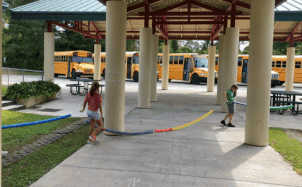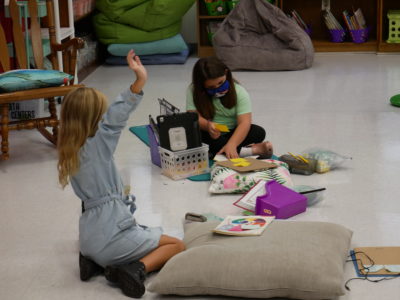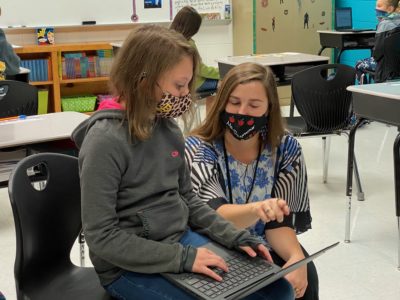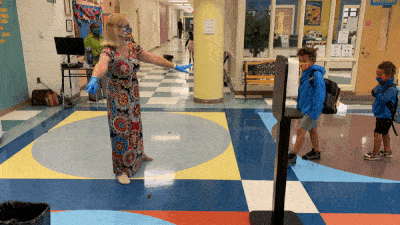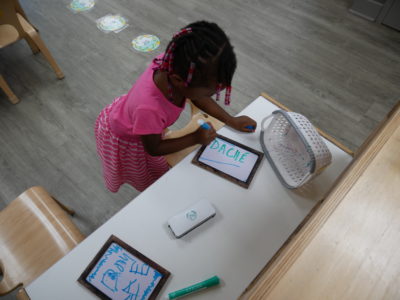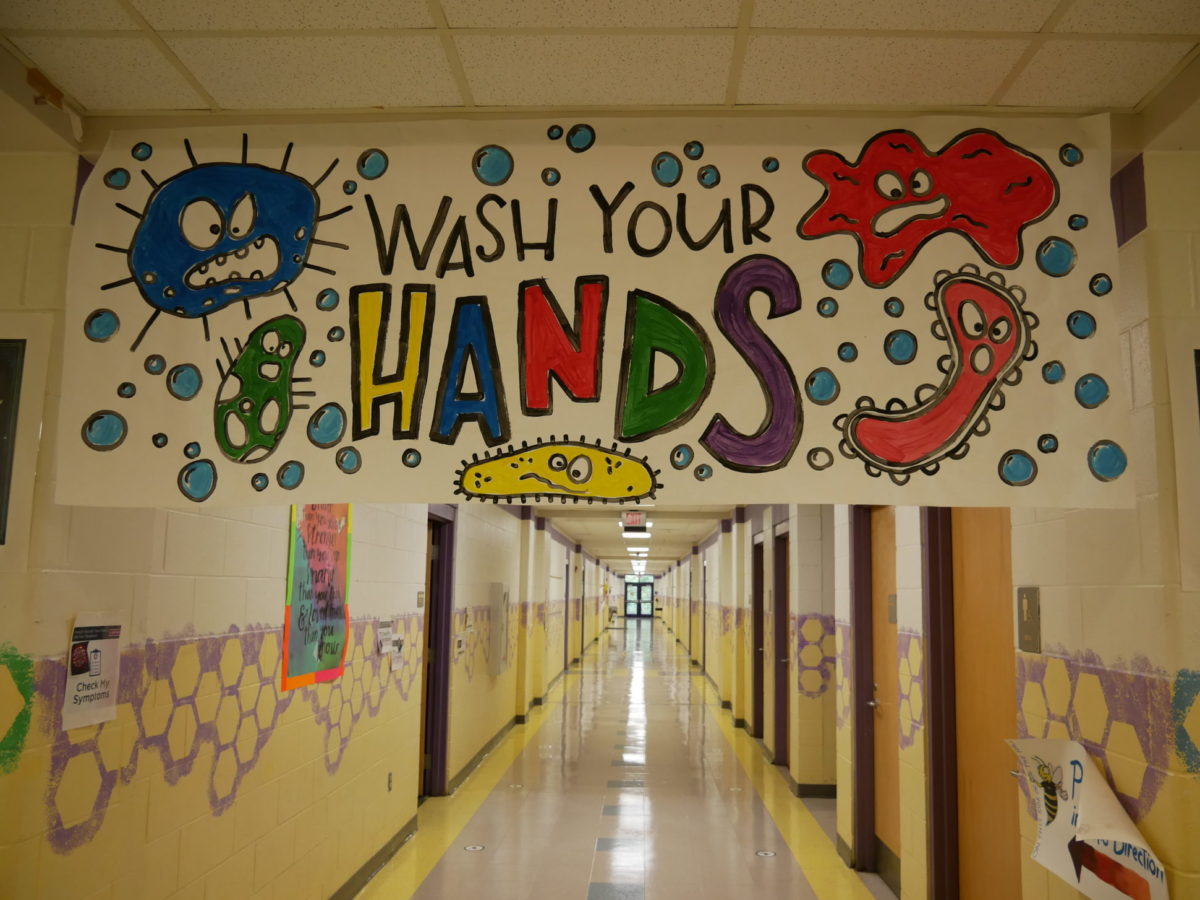

As several school districts across North Carolina bring young children back for full-time in-person instruction, researchers remain uncertain on children’s role in spreading the coronavirus.
Young children represent fewer COVID-19 cases than other age groups and have less severe symptoms. A September study published in Science Translational Medicine suggests that young children’s innate immune responses prevent infected children from becoming severely sick.
But when it comes to transmission, “it’s still something we’re trying to understand,” Emily Oster, who leads a national project based at Brown University that tracks coronavirus cases in schools, said in an email.
A large study from South Korea, published in July, found that children younger than 10 were much less likely to transmit the virus to others than older children and adults were. But the study had limitations. For one, researchers did not trace the contacts of children without symptoms.
As the fall semester continues, district and school leaders are considering in-person instruction for students who need it most. Gov. Roy Cooper announced in September that districts, if they chose, could bring all elementary students back for in-person instruction starting this week.
Middle and high schools are still limited to fully remote or hybrid models. Mandy Cohen, state secretary of health and human services, cited “higher benefit, lower risk” as the logic behind allowing full-time in-person returns only for K-5 students for now.
Scientific research is just one of the factors education leaders are considering, along with the COVID-19 metrics in their communities and the academic, social, and mental well-being of their students.
But as far as science goes, how much does age matter?
Outbreaks low, so far
As of October 6, there were 15 ongoing COVID-19 clusters in school settings and 10 in child care settings, according to the state Department of Health and Human Services. DHHS defines a cluster as “a minimum of five laboratory confirmed cases with illness onsets or initial positive results within a 14-day period and plausible epidemiologic linkage between cases.”
Since the pandemic began, 186 total cases have come from school clusters and 388 from child care clusters. No deaths have been related to school clusters, and three have been related to child care clusters.
Of all cases in North Carolina, 11% have been in people younger than 17 years old, with one death.
Dr. Sallie Permar, director of the Children’s Health and Discovery Institute at Duke University Medical School, said these numbers are lower than what some experts predicted for school reopenings.
“While there are cases that may come onto campus or expose individuals who come onto campus, the rates at which transmissions are occurring in the school setting is very low,” Permar said.
At the national level, Oster said, the dashboard’s data from 1,006 schools also show low case rates. For both students and staff, participating elementary schools report the lowest case rates of any age level.
“Our initial findings in our data suggest low rates in schools. Although we need to wait for more data to understand issues of spread, and also understand better the role of prevention measures,” Oster wrote.
Understanding why
Permar said it’s unclear why child care facilities and schools have contained outbreaks better than colleges and universities. One theory is that young children don’t transmit the virus as often. Another is that the safety protocols schools have implemented — social distancing, hand washing, and mask wearing — are effective.
“My theory is that it would be a combination of the two, especially in the younger grades, where there are measures in place in the majority of schools that are open now, which include the ways that we know how to prevent transmission: which is distancing, wearing masks, and washing hands,” Permar said.
A Duke University study released in September, of which Permar was an author, found that the most accurate predictor of whether a child would contract the virus from a positive household member was whether the child had an infected sibling.
“It might just be a marker of widespread household infection where the index case didn’t quarantine enough, or at all,” she said, “but also another thing we thought about is: Does height matter?”
Permar added that even if children are just as likely to spread the virus, they are less likely to spread it to a lot of other individuals, as adults have in “super-spreader” events.
An article in Pediatrics, the American Academy of Pediatrics journal, in August cited studies suggesting low transmission by children within and outside of households. In China and Switzerland, studies found low percentages of hospitalized children who were “index cases,” or the initial case within a household. Studies in two schools in France and Australia found low secondary infection rates from infected students.
“Although 2 reports are far from definitive, the researchers provide early reassurance that school-based transmission could be a manageable problem, and school closures may not have to be a foregone conclusion, particularly for elementary school–aged children who appear to be at the lowest risk of infection,” the article said.
Bertha Hidalgo, an epidemiologist in the School of Public Health at the University of Alabama at Birmingham, warned against drawing conclusions from data so far. Since children are less likely to be symptomatic and many studies leave out asymptomatic cases, Hidalgo said, we are probably missing cases.
“I and others believe that the reason we don’t see a lot of younger kids in our data is because for a long time we have prioritized testing for older individuals and/or people who are symptomatic,” Hidalgo said.
“The model that we have for testing in the U.S. hasn’t allowed us to fully understand not only the spread of COVID-19 … but (t0) really get a grasp on those asymptomatic or mildly symptomatic infections that don’t ever make it to testing.”
Schools also have adults, out-of-school activities
Even if young children spread the virus less often or to fewer people, there are still adults in elementary schools.
“… The key issue for schools is not so much how much kids transmit, but what happens overall,” Oster said in an email. “Staff to staff transmission is a huge issue in schools, and it’s important to consider as we think about reopening.”
Hidalgo echoed that. She said that such instances as mask breaks during lunch are worrisome for adult staff, especially when community spread is high. It’s important for district and school leaders to consider how much local testing is occurring and the positive test rate within the school’s community, she said.
If schools do decide to reopen, Permar and Hidalgo said, mask-wearing, washing hands, and physical distancing are still the most effective prevention tools. Being outdoors as much as possible and increasing indoor ventilation also help.
Hidalgo said having a plan for evaluating the success of different measures is also important.
“If they’re going to do this a right way, they need to have an evaluation plan in place, which is going to have effective contact tracing,” she said. “Quarantine and isolation is necessary, because most schools aren’t going to have the resources to do testing up-front for all of the people that are coming back to the school.”
Hidalgo said there are other spaces and activities before and after school that will affect spread — more play dates, more sports practices and extra-curricular meetings, more carpooling.
“You cannot control anything that happens before or after, but there are a lot of things that happen before or after that affect whether or not someone shows up positive at the school,” she said.
What about MIS-C?
Though young children are less likely to have severe symptoms from a coronavirus infection, a rare inflammatory disease called MIS-C (multi-system inflammatory syndrome in children) has shown up in a small subset of children with current or previous coronavirus infections.
North Carolina has recorded 40 MIS-C cases since May. Permar said about 1 in 1,000 children with COVID-19 infections acquire MIS-C, which can cause issues with the heart and other organs.
As the pandemic evolved, Permar said, she expected “a flood of cases” that never came. She was testing children with fevers and other symptoms to see whether they had mild forms of MIS-C, but that wasn’t the case. Doctors have been able to treat it with medications that are common in treating other inflammatory syndromes, she said.
“When you do have a case, it’s pretty quickly that the inflammatory process can be resolved with fairly standard treatment,” Permar said. “All of that was good news for the MIS-C picture.”



